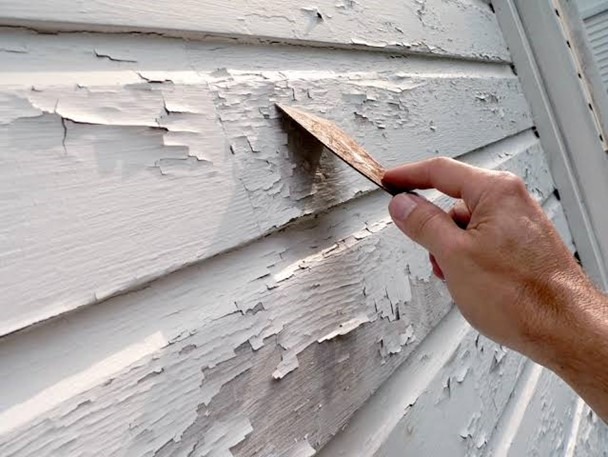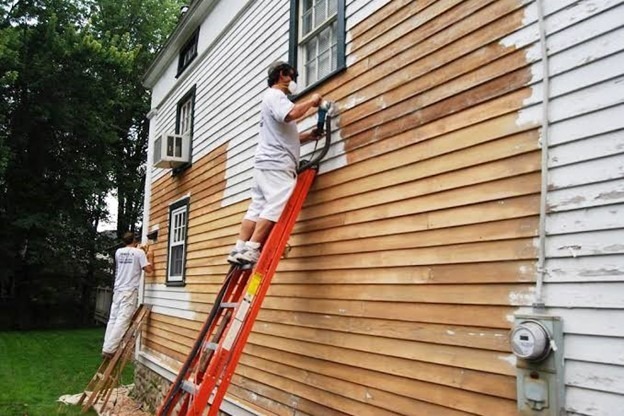The exterior part of your home is as important as its interior. This is what your visitors see when they come around. You will want your homes’ exterior to match the aesthetic value and landscape of your property. This is why you make sure to get it painted.
Exterior painting involves having a painting project on your house exterior. It is a great way to beautify a home and maintain a building’s structure. When done correctly, it will last for a long time.
Just like every other house project, there is always a hard and easier way to carry out this painting. You may choose to do it yourself or hire a painting contractor. If you go for the latter, you need to make sure that the painter you hire is reputable and professional. If you don’t know how to go about this, you can check out Elk Horn Painting for some help. Like other castle rock painters, they will offer exterior painting tips that will assist your project.
Now, let us discuss some of such tips they offer that can help your project.
Important Exterior Painting Tips That Can Help You
Here are some painting tips or suggestions to know:
Prepping Your Home

Before starting this project, you might be excited about the possible outcome. Your exterior walls will have new paint colours and this will beautify your homes’ appearance. However, there is a lot to do before that will happen.
Here are some prepping suggestions you should follow before painting:
Scraping
In this prep step, you use a wire brush and scraper to remove old defective paints. If your exterior has metal parts, attach a drill on the wire brush to remove paint and rust. Ensure that all defective paints are removed and the walls are partially clean from paints.
Sanding
This is to smoothen the edges of a scraped spot. You use sandpaper to do this. If the scraped or rough spot is very large, an electric sander will be more effective and less tiring. You can use it to clear old paint and also smoothen rough edges.
Melting
Some old paints can be difficult to remove. Rather than using muscle, you can apply heat to the walls. You do this with an electric paint cleaner. This device melts paint off and has a built-in scraper to clean off the melted paint. You will need to wear heavy gloves before using this equipment.
Paint Remover
These chemicals are very expensive and you can only resort to using them if your walls are very big and wide. Because these removers may interact with the paint finishes, only professionals can use them effectively. For other helpful paint removers that you can use, see here: https://www.thespruce.com/natural-paint-remover-4589270
Washing
If you are fortunate, your home may only need to be washed before painting. For big houses, use a power washer to clean off dirt, debris, and old paints on the walls. Make sure you protect yourself when doing so. You can also use a hose, a scrub brush, and warm soapy water to clean the walls.
Reset Popped Nails
After washing, you may realize that there are some stubborn nails on the wall that has rusted or popped out. If that is the case, use sandpaper to clean the head of the nails. Then reset the nails back into the surface.
Protect Your Environment
Your bushes, shrubs, and trees can be affected by paints when the project starts so make sure you protect them. Trim or cut down the branches that are touching the wall. Bushes close to your house can be covered with canvas or clothes. Also, cover small shrubs, flowers, driveways, and sidewalks from paint spills and drips.
Priming
You can appropriately add a primer to the raw wood or bare nails and metal surface. Remember that the primer you use will affect the type of paint to use later on. These coatings serve as a foundation of paints, offering extra protection against different elements like air and water.
Know the Right Amount of Paint to Use
Your house size, the coating to use, the surface, and the technique of application are factors that will determine how much paint to get. Calculate your house perimeter and then buy an extra bucket of paint for insurance.
Try out Colours
After prepping, the next thing to do is to try out colours. Choose about two to four colours and do a patch test. Test the colours on light and at different times of the day. Doing so will help you choose the right colour scheme.
Understand the Weather
Once you have the perfect colour scheme to use and have prepped your house, the next tip is to understand the weather. If it is raining or the weather is too humid or cold, it is very hard to paint. Paints need moderate moisture to dry properly.
Extreme hot weather can cause paint to melt off and very cold weather can cause it to cake or crack. Choosing the optimum temperature is important. For further information on how temperature can affect paints, click here.
Use the Right Painting Equipment
You do not need to use rollers or brushes on every surface. Paint rollers are most fitting for large flat areas. If your house has a large flat side, it will be good to use these rollers to cover sections quickly.
Paint sprayers are also good tools to use. They help you to cover detailed areas or large areas. Using these sprayers requires much preparation but it is a time saver.
Conclusion
When painting, remember to be patient and take your time. Do not forget to wash off paints from the rollers and brushes after use. Following the helpful exterior painting suggestions mentioned above will assist you greatly.

















